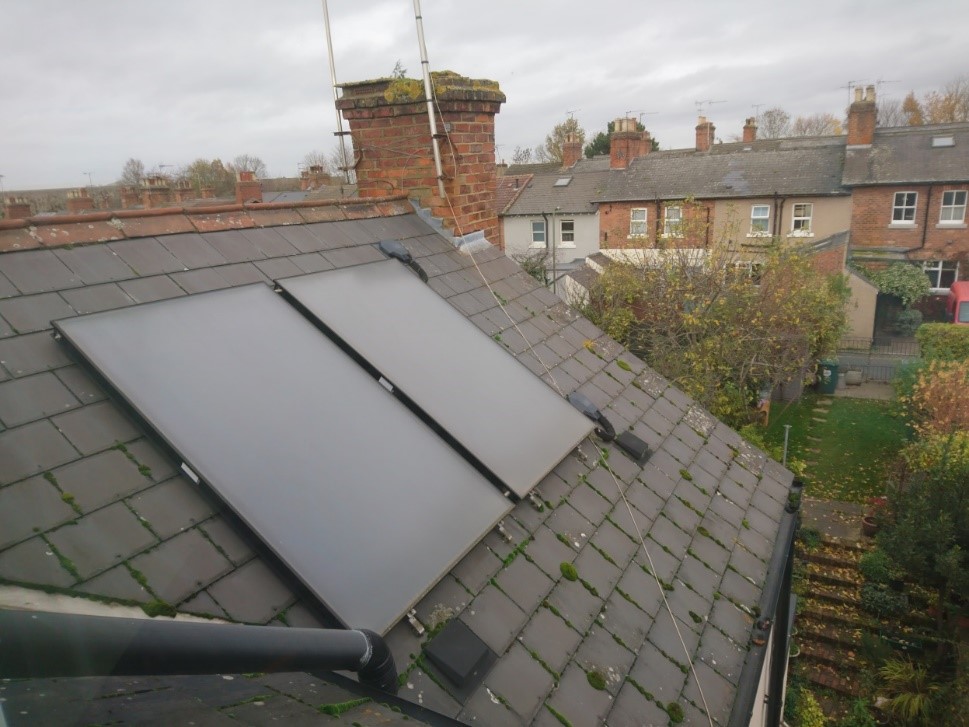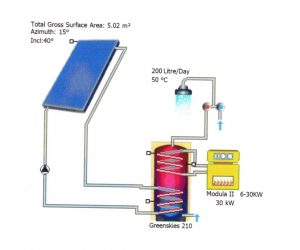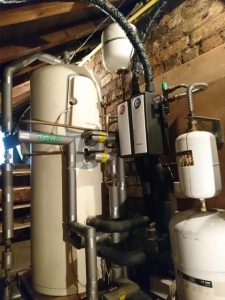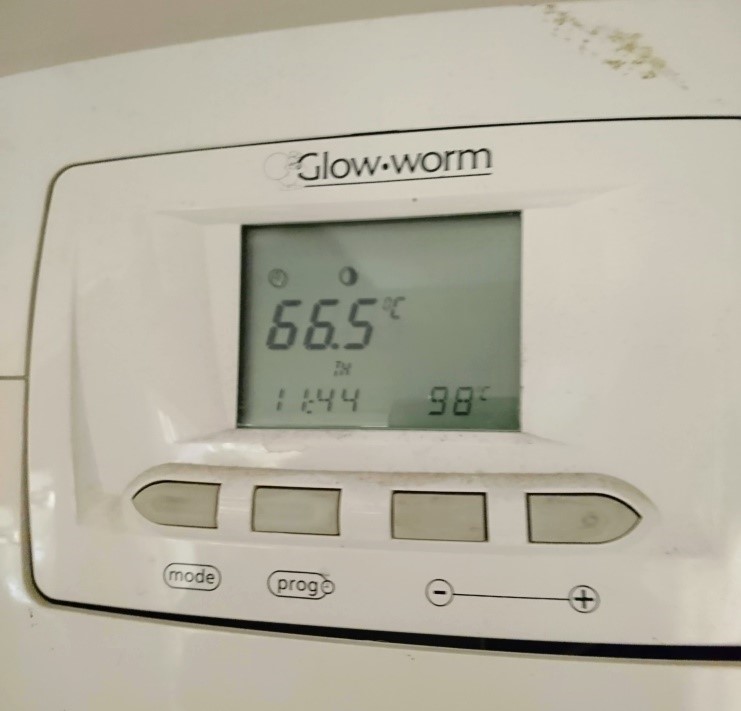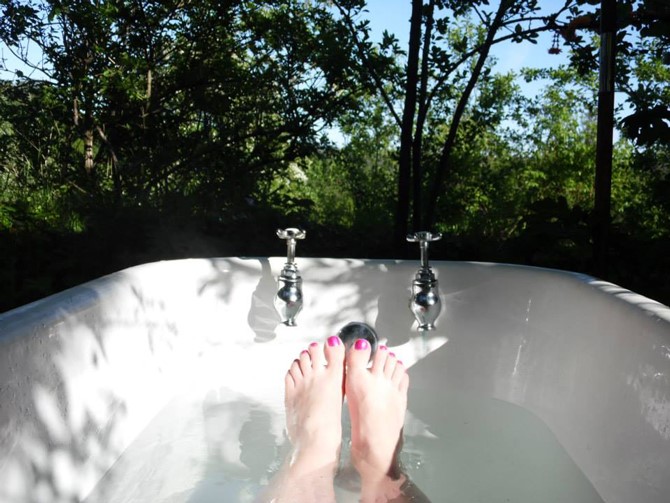We are a family of 4 with two adults and two teenagers. We all take showers every day or two, and my husband and I usually take a bath each at least once a week (I am only sharing this as it’s relevant to our hot water consumption).
Our 5m² of solar thermal panels were installed in December 2009 along with a new gas boiler, a twin coil (210l) hot water cylinder and new radiators throughout the house. The total install cost for everything was about £10k.
Figure 1. These are our panels on a SE facing sloped roof
The system works by circulating a glycol mixture through the panels (when they are warm) and then through the lower coil in the cylinder, transferring the heat into the coldest water at the bottom of the cylinder. In winter this pre-warms the cylinder leaving the boiler less work to heat it to the desired 65°C, as the weather improves there are more days where the panels can heat the whole cylinder without help from the boiler.
Figure 2. How the system works and the inside of our attic plant room
The panels were sized to meet about 50% of our annual hot water needs. Unfortunately we couldn’t afford the additional monitoring equipment needed to know how much we are generating in practice, but we know (because I nerdishly keep an eye on it) that it makes a very useful contribution – especially on sunnier days.
On the day of writing (21st April 2021) it is a sunny spring day in London where we live and the BBC says the external air temperature is around 14°C. The pump is on, collecting heat from the panels which are showing a temperature of 98°C! In peak summer the reading goes up to 130°C before it maxes out.
Figure 3. The control panel this morning showing the cylinder sensor at 66.5°C and the glycol mixture at 98°C
During prolonged hot, sunny weather the cylinder reaches the maximum temperatures of 75°C (it wouldn’t be wise to boil it) and the system goes into ‘protect mode’ and stops pumping.
210 litres of water at that temperature will last us several days, so we can turn off the gas reheat for several months of the year, only boosting it occasionally after a few days of overcast weather.
The system has not given us any trouble in 10 years, it just quietly gets on with it. We have the boiler serviced regularly, and the glycol in the solar system was changed about 4 years, but no other maintenance has been done. If we were installing renewables now we would probably chose PV panels to generate electricity, but I am really happy to have these thermal panels and the sensation of bathing in sunshine!

